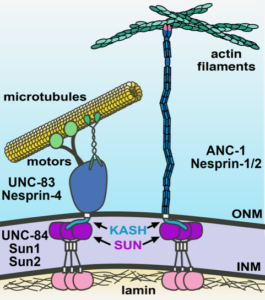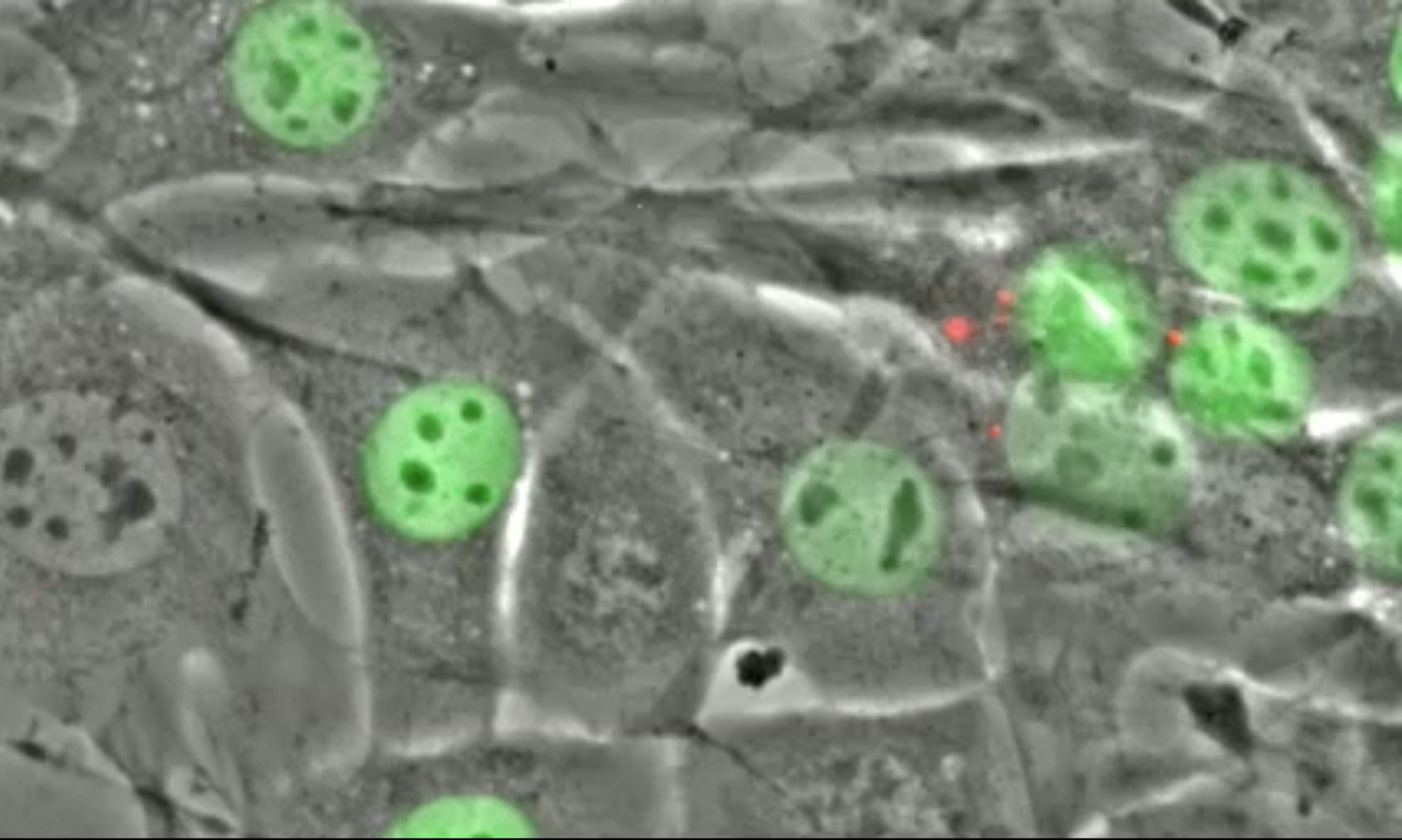To learn more about what our lab studies, watch Dan’s video and Gant’s video with the Paul G. Allen Frontiers Group!
The joint Starr/Luxton laboratory is obsessed with the nucleus. We are especially interested in understanding the mechanisms and functions of the physical coupling of the nucleus and the cytoskeleton. Our lens on nuclear-cytoskeletal coupling is the conserved nuclear envelope-spanning molecular bridge known as the linker of nucleoskeleton and cytoskeleton (LINC) complex, which mechanically integrates the nucleus with the cytoskeleton and consequently the extracellular environment.

Functional LINC complexes are required for several fundamental cellular processes, such as DNA damage repair, meiotic chromosome pairing, migration, mitosis, and polarization. Underscoring their importance is a growing list of genetic mutations in LINC complex proteins that are associated with the following diseases: autism, ataxia, bipolar disorder, cancer, dementia, dystonia, muscular dystrophy, deafness, and schizophrenia.
Our research program investigates several key questions about the cellular biology and biophysics of LINC complexes, including:
- How are functional LINC complexes assembled and disassembled in cells?
- How do LINC complexes mediate nuclear migration and positioning in cells?
- How do LINC complexes enable mechanotransduction in cells and tissues?
- How do LINC complexes control the organization of chromatin and nucleoli in the nucleoplasm?
We address these critical knowledge gaps using a suite of cutting-edge biophysical, cell biological, molecular genetics, quantitative imaging, and synthetic biological approaches. Our innovative approach benefits from the use of several model systems, including the roundworm Caenorhabditis elegans, mammalian tissue culture cells, and the social amoeba Dictyostelium discoideum. This approach allows us to investigate LINC complex function and dysfunction across three biological scales: molecular, cellular, and tissue. For a layperson description of our studies see “Nuclei don’t use Google Maps.”
The highly collaborative and interdisciplinary nature of the joint Starr/Luxton laboratory positions us at the forefront of nuclear cell biology and mechanics. Our complementary backgrounds of developmental genetics (Starr) and quantitative cellular biophysics (Luxton) synergize to form a uniquely powerful environment for scientists looking to investigate the fascinating biology and pathobiology of LINC complexes.
We are located in the Department of Molecular and Cellular Biology at the University of California, Davis. The city of Davis is a small college town found in the central valley of California. From this location, we are ~1 hour from the San Francisco Bay area and ~2-3 hours form Lake Tahoe as well as the Redwood and Yosemite National Parks.
We have funded positions available for 4 postdoctoral fellows. We are also interested in recruiting graduate students from two University of California-Davis programs: Integrated Genetics and Genomics (IGG), Biochemistry, Molecular, Cellular and Developmental Biology (BMCDB). Please see the descriptions of our research and explore our work by checking out the publications page of this website.
Thanks for visiting!







